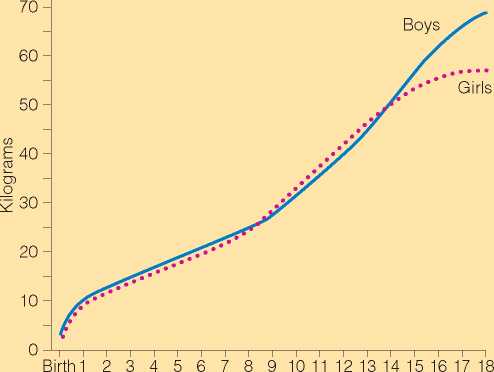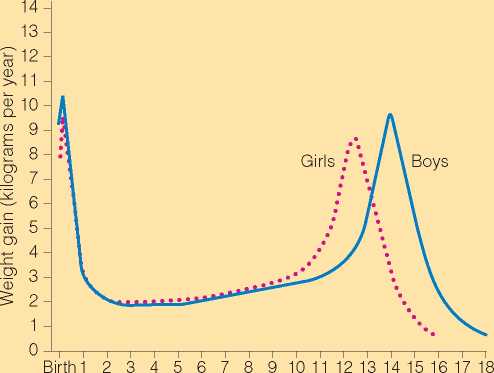How Have Humans Adapted Biologically to Naturally Occurring Environmental Stressors?
When faced with an environmental stressor, the human species has responded biologically at three distinct levels: genetic, developmental, and physiological. Some genetic adaptations are expressed in terms of phenotypic variation of continuous traits. Even when the genetic bases to these adaptations are not precisely known, scientists can study them through comparative measurement of the associated phenotypic variation. In addition, the long period of human growth and development allows the environment to interact with genes and shape the human body. Short-term changes or physiological adaptations occur in response to a particular environmental stimulus. Today, the rapid rates at which cultural processes change human environments pose new biological challenges with important consequences for our species.
How Are Humans Adapting in the Face of Globalization?
The interconnectedness of humans to one another and to the environment is critical for understanding human adaptation and disease. Today, because local human environments are shaped by global political and economic systems, these features directly impact the distribution of health and disease. Simply describing disease in terms of biological processes, such as those associated with infection or malnutrition, leaves out the ultimate reasons that some individuals are likelier than others to become sick. Examination of the impact of political processes on disease can reveal its social causes, bringing us closer to finding long-lasting cures.
What Is Evolutionary Medicine?
Evolutionary medicine, a branch of medical anthropology, uses the principles of evolutionary theory to contribute to human health. Basic to this approach is framing health issues in terms of the relationship between biological change and cultural change. Biological evolution shaped humans slowly over millions of years while cultural change occurs relatively quickly. The resulting dissociation between human biology and current cultural practices may lead to disease. Also, because culture shapes even scientific interpretations of the human body, evolutionary medicine acknowledges that some physiological phenomena regarded as symptoms of disease can also be understood as naturally evolving defense mechanisms.
Throughout millions of years of human evolutionary history, biology and culture interacted to make humans the species we are today. The archaeological record and contemporary human variation reveal that biology and culture continue to shape all areas of human experience, including health and disease. Indeed, an inside joke among anthropologists is that if you do not know the answer to an exam question about biology and culture, the answer is either “both” or “malaria.” Our current understanding of malaria, as explained in previous chapters, illustrates how answering “malaria” is just like answering “both.” Farming practices (culture) of the past created the perfect environment for the malarial parasite. The genetic response (biology) to this environmental change was increased frequencies of the sickle-cell allele.
To add a few more biocultural layers closer to the present, think about how contemporary global inequalities contribute to the continued devastating effects of malaria in poorer countries today. For example, if malaria were a problem plaguing North America or Europe today, would most citizens of the countries with rampant malaria still be without adequate treatment or cure? Similarly, public health initiatives for genetic counseling to reduce frequencies of sickle-cell anemia in the United States have been met with distrust by African Americans who have experienced racism rooted in a false message of biological difference.234 Would the average Euramerican feel comfortable with genetic testing to eliminate a disease gene if he or she had experienced some of the wrongs underprivileged ethnic minorities have experienced in the name of science?
Consider, for example, the Tuskegee Syphilis Study, carried out by the U. S. Public Health Service in Macon County, Alabama, from 1932 to 1972. This study involved withholding syphilis medication from a group of poor African American men without their knowledge, so that the scientists could learn more about the biology of syphilis in the “Negro.” These methods are now widely recognized as a moral breach that caused unnecessary pain and suffering to the men and their families. As a result of these unethical practices, the U. S. government changed its research policies involving the biological study of human subjects. In short, when examining a seemingly biological phenomenon such as disease, cultural factors must be considered at every level—from how that phenomenon is represented in each social group (reflected in this case in the false notion that the biology of syphilis would differ between people of different skin colors) to how biological research is conducted.
An integrated biocultural approach is one of the hallmarks of anthropology. In examples ranging from infant feeding and sleeping practices to the relationship between poverty and tuberculosis, biocultural connections have been emphasized throughout this book. In this chapter, we take a deeper look at this connection and examine some of the theoretical approaches biological and medical anthropologists use to examine the interaction of biology and culture.

The Tuskegee Syphilis Study denied appropriate medical treatment to African American men in order to study the supposed differences in the biology of the disease in the “Negro.” This human experimentation was not only false from a biological perspective but represents a moral breach in research conduct. Public outcry about this experiment led to regulations that protect all human subjects in biomedical research.

Age in years

Age in years
Figure 13.1 Franz Boas defined the features of the human growth curve. The graph on the left depicts distance, or the amount of growth attained over time, while the graph on the right shows the velocity, or rate of growth over time. These charts are widely used throughout the globe to determine the health status of children.
While humans possess a number of exquisite biological mechanisms through which they have adapted to the natural environment, these mechanisms can fall terribly short in today’s globalizing world. Before turning to the challenges we face from the dramatic changes we have made in our environment today, we will explore the biological mechanisms humans have used over millennia to adapt to three naturally occurring environmental extremes: high altitude, cold, and heat.




 World History
World History









